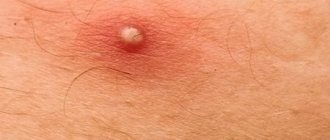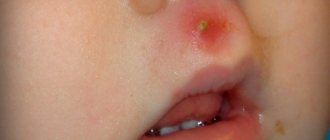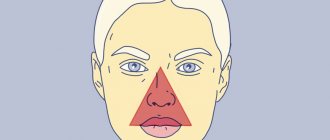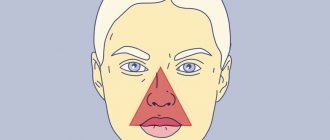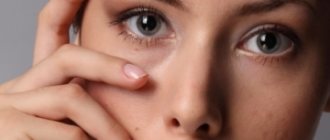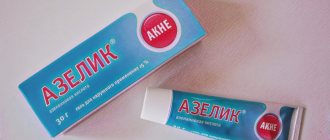Accelerating the process of maturation of an inflamed pimple is not such a difficult task. To solve it, warming and anti-inflammatory medications are used to accelerate blood flow in the area of the epidermis that has been affected by acne. As a result of this, all processes inside the pimple are accelerated and maturation occurs 2-3 times faster than it would be naturally. Accelerating the metabolism inside the inflamed acne is necessary so that the cycle of the formation of the pimple stem and its disintegration occurs as quickly as possible. In this case, there is no need to squeeze out acne or use strong antibacterial ointments to remove them. In addition to pharmaceutical drugs, you can also use traditional medicine in the form of warming compresses.
What is post-acne
Acne can appear on the face and neck, in the interscapular area, on the back and in the upper chest. Acne or acne is the formation of inflammatory elements on the skin - compacted reddened tubercles (papules) and blackheads, purulent white heads with redness around them. If elements are injured, squeezed out or heal poorly, post-inflammatory, scarring, and pigmentary changes form on the skin - this is post-acne.
This is what post-acne looks like
What to do with a pimple after it matures?
It's best to wait until it clears itself. So all the contents will come out of it. This self-cleaning will be as safe as possible for your skin.
For comparison, if you squeeze out a skin defect incorrectly, its contents will not come out completely and will provoke repeated inflammation, which will be many times greater than the previous one, since you injure the skin.
A cleared pimple must be properly cared for. In its place, a wound forms, and an open one, into which harmful bacteria can again penetrate without much difficulty. To prevent this from happening, speed up the healing process of the pimple.
What should I anoint him with in this case? You can use tea tree oil, chamomile decoction or one of the following pharmaceutical preparations:
- Tetracycline ointment;
- Salicylic-zinc ointment or paste;
- Akriderm (ointment);
- Chlorhexidine;
- Erythromycin ointment.
During healing, do not touch the problem area of the epidermis with dirty hands. Try to keep hair out of it. And remember that proper proper care is the key to clean and attractive facial skin.
That's all the information regarding accelerating the maturation process of subcutaneous acne. I hope the article helped you get rid of the problem of an inflamed skin defect.
Do you know what actually happens to the skin when a pimple begins to mature? Watch the video and find out.
I will be very pleased if you subscribe to site updates and share articles on social media. networks with your friends. Visit us often and learn useful information about the treatment of various types of skin defects and diseases. All the best to you and see you again!
Acne appears not only in adolescents during the period of age-related hormonal changes, but also in adults as a consequence of various diseases, changes in hormonal levels or a constant depressed state. Due to the increased activity of the sebaceous glands, inflammation appears on the skin - acne. The immune system, in turn, fights inflammation, but pus collects under the skin in the follicles, which can cause infection. The appearance of acne on the skin of the face can signal the presence of a number of diseases in a person. A pimple is also a cosmetic defect.
So, what can you put on a pimple to make it go away faster? You can speed up ripening with pharmaceuticals, which are freely sold in all pharmacies.
These can be essential oils, hydrogen peroxide, sulfur ointment, tonics and lotions with salicylic acid and much more. There are also many folk remedies and methods to accelerate the maturation of acne.
Reasons for the appearance and areas of localization of post-acne
The skin is the largest organ in the human body, and it has a complex structure. In addition to the epithelial cells that form the continuous skin, there are also hair follicles, sweat and sebaceous glands. It is the glands that secrete sebum and form a protective hydrolipidic mantle on the surface of the epithelium that suffer during the development of acne.
To begin with, it is important to understand why acne occurs. When the sebaceous glands malfunction, the epithelium in the area of the ducts thickens, the lumen of the gland narrows and sebum cannot be regularly and fully released through the pores to the surface. Then the fatty secretion is retained inside the gland duct itself, which provokes inflammation with the participation of microbes that are constantly present on the surface of the skin, making up its microflora.
The process of acne formation goes through certain stages:
Initially, comedones are formed - an increase in the size of the sebaceous gland. Nodules form in the skin with an irritated opening of the sebaceous gland. As the process develops, black dots form in the center, and disturbances in the outflow of sebum, microbial activity, and the work of leukocytes during inflammation lead to the formation of purulent heads (pustules).
By themselves, these elements can leave behind scars and uneven skin, and if they are further injured, if you squeeze out blackheads or purulent heads, the inflammation only intensifies, and the purulent contents can spread to neighboring areas of the skin.
To prevent inflammation from spreading, to prevent damage to more and more areas of tissue, and to prevent pus from penetrating into neighboring areas, inflammatory changes form around the damage to the sebaceous gland.
Swelling occurs in the area of the pimple, collagen production is stimulated, scar changes are formed: connective tissue elements are formed, new capillaries grow, which gives redness, the work of pigment cells is stimulated - pigment spots are formed - persistent and with uneven edges.
Especially often, problems arise on the face, mainly in the forehead, on the nose and cheeks, on the chest, they also appear in the décolleté or on the back.
Redness disappears over time, pigmentation becomes less bright, scars can atrophy, forming dimples, or, conversely, become convex and rough.
Is it possible to speed up the maturation of a pimple?
Of course, you can make this process faster. Moreover, dermatologists recommend using this method of therapy so that the purulent contents of the neoplasm come out naturally after several procedures for treating inflamed acne. To do this, it is allowed to use both traditional medicines from the pharmacy and traditional medicine recipes, which ensure rapid maturation of the inflamed area of the skin.
Some people who practice accelerated acne maturation are often tempted to squeeze out the contents of the acne as the acne becomes soft and the pimple's contents are ready to burst and come out. This cannot be done, since the acne must ripen on its own, the pus and ichor located inside it will come out at the moment when there is time for this from the point of view of the physiology of the epidermal tissues. Any premature impact on a pimple threatens the introduction of a secondary infection, extensive inflammation and the formation of even more acne.
Types and stages of post-acne
Among the main signs of post-acne, hyperpigmentation is identified - these are areas of normally colored and darker skin, alternating with each other and forming an uneven tone.
In addition, the typical presence of stagnant red spots, enlarged skin pores, often filled with sebum, as well as pathological scars. In the area of blockage of the sebaceous glands, atheromas (sebaceous gland cysts filled with fatty secretions) or milia (whiteheads) are formed.
The main sign of post-acne is old cicatricial changes, scars after healed purulent acne. They can take three forms:
- depressed areas of skin, dimples (or atrophic scars);
- convex, lumpy areas, often with areas of erythema (hypertrophic);
- areas of dyschromia (the surface of the skin is spotty, with areas of increased pigmentation).
Sometimes the formation of keloid scars is mistakenly added to the classification. This is the wrong approach. People with a hereditary predisposition to the formation of rough and poorly healing scars that disfigure the appearance do not often suffer from acne, and therefore post-acne phenomena are rare for them.
The most common type of post-acne is the appearance of atrophic scars. According to the Jacob CI classification, they can take the form of rounded, chipped and square elements. This division helps doctors plan treatment and predict its results.
Round scars are the shallowest, and the prognosis for them is the most favorable. The square ones are somewhat deeper, but are also eliminated quite well. The biggest problem is the chipped forms of post-acne, they look like the Latin letter “V”, their bottom is located deep in the dermis.
Types of skin damage from acne
Proven methods
There are a lot of tips and recommendations online from various forums, where users advise what to put on a pimple to make it go away faster. Many repeat well-known methods, and some offer modified (improved) variations. The main thing is that all these methods showed good results. Here are some of them:
- In addition to the above procedure with salt, another method is proposed with the addition of laundry soap. A solution of these components must be applied to the face for 10 minutes.
- Instead of salt porridge, it is suggested to apply a compress of concentrated saline solution.
- Recipe from a mixture of aspirin, hydrogen peroxide, baker's yeast. It is recommended to apply a mixture of these ingredients on the pimple and leave it on for 20 minutes.
- Toothpaste will help, if necessary, quickly hide inflammation on the skin of the face. The menthol in the paste will soothe the skin and relieve inflammation, making it less noticeable.
- If you urgently need an instant effect, you can cauterize the pimple with hydrogen peroxide. However, this is a temporary measure and the main cause of inflammation will not go away. In addition, there is a high risk of skin burns and unnecessary scars. You need to be careful when using and not use too often.
If, when pressing, the pimple does not have a stem, it means that the contents have not yet dried and are viscous; when squeezed, it may partially remain under the skin. This will lead to re-inflammation of the skin pores. Before squeezing it out, you need to make a hole at the tip of the pimple with a previously disinfected needle. After the procedure, you need to treat the wound with an antiseptic to avoid infection and rapid healing without complications.
After a couple of hours, the inflammation and redness from the former location of the pimple should go away. If this does not happen, you can soothe your facial skin with herbal compresses (chamomile, celandine) at night. Relapse will not occur if you follow a diet that does not stimulate the sebaceous glands.
Everyone can suffer from acne: both women and men. The reason for their appearance depends mainly on the disease of the internal organs. The weaker sex experiences this problem most strongly. After all, the face is the part of the body that catches the eye first. The nose is especially visible to everyone. With every appearance of a pimple, a woman thinks about how to speed up the maturation of a pimple? There are a large number of ways to do this yourself at home.
Ways to get rid of post-acne
The intensity of post-acne is directly related to the severity of acne. Therefore, it is important to work not only to eliminate the consequences, but also to prevent the appearance of new elements on the skin. It is necessary to fight acne itself, eliminating its main causes. If pimples appear again and again, the prognosis for post-acne treatment is questionable; inflammation will give rise to new scars. Therefore, work with an experienced dermatologist-cosmetologist is required.
Most of the work on restoring, smoothing the skin and eliminating scars is carried out by a cosmetologist, but certain activities can also be performed at home. Moreover, only an integrated approach will give the most maximum results.
What can you do at home?
At home, you need to help the skin recover; it needs building elements and proper nutrition. To regenerate the skin and form its structure, it is necessary to supply vitamins and minerals, protein as a source of amino acids for the construction of collagen fibers and the synthesis of hyaluronic acid, which moisturizes and gives the skin tone and smoothness.
In addition, omega acids are important, which are involved in cell renewal and form cell membranes. It is important to adjust your diet, eliminate as much processed foods as possible, food chemicals (dyes, preservatives, E-additives) and give up bad habits.
To prevent new acne and improve tone, nourish the skin, heal inflammation and small scars, pharmaceutical products will help. You can use 1% salicylic alcohol or boric acid and wipe the skin with it twice a day. Levomekol ointment works quite well in treating acne, suppressing inflammation and eliminating scars. Many people use bodyaga powder, which is diluted in water to a paste and applied to the affected area. But before using all these remedies, it is important to first consult with your doctor to prevent side effects and complications.
Skin care is complemented by serums, care creams (day and night) selected by a cosmetologist, as well as homemade peelings with fruit acids. They delicately exfoliate the skin, remove dead cells, and cleanse its surface.
Folk remedies are often used, for example, infusions of St. John's wort and chamomile, which have an anti-inflammatory, soothing, cleansing effect. You can freeze them and wipe the skin with the resulting ice cubes, further increasing blood circulation and capillary tone.
You can also use masks with blue clay. The recipe for making a mask is very simple: three tablespoons of powder are diluted in water to a paste, applied to the problem area for 20 minutes and then thoroughly washed off with water.
What treatment methods are used in a cosmetology clinic?
Although homemade recipes help in the fight against post-acne, you should not think that only through them you can eliminate all problems. Home methods act on the very top layers of the skin and reduce only minor defects.
Modern cosmetic procedures will help get rid of deep scars, pigmentation and unevenness. But don't expect instant results.
Treatment methods are selected individually and comprehensively. The more severe the initial problem and the wider the affected area, the longer the treatment will be.
To achieve maximum smoothness of the skin and an even complexion or eliminate blemishes on the body, you need a whole series of procedures, supplemented by home care and carefully selected cosmetics. On average, the first noticeable results will be visible after 1-2 months with regular implementation of all necessary treatment measures.
If there is unevenness, decreased skin tone, pigmented or stagnant spots, peelings . There are a lot of treatment options: these can be mechanical peels (compositions with herbs, small dense particles) and chemical peels (with retinol, glycolic, resorcinol or other compounds).
With mechanical peeling, the effect of cleansing and exfoliation is achieved due to the mechanical scraping of the particles included in the composition of the upper layer of skin with outdated epithelial cells.
With chemical peeling, a similar effect is achieved through chemical cauterization of the upper layer of the epidermis, which leads to its subsequent rejection with peeling.
The cosmetologist selects peelings to suit your needs and strictly follows all the rules for their implementation in order to achieve maximum effect and avoid side effects. On average, the first results are visible after 5-6 procedures.
A more effective analogue of peeling is laser skin resurfacing . The doctor performs the procedure with a special laser unit with a strictly specified wavelength in order to influence the skin at the required depth without damaging neighboring tissues. The laser beam cauterizes the skin, the treated areas are actively exfoliated, which allows stimulating the regeneration of new tissues, more even and smooth.
Check out our patient's review of laser facial resurfacing:
Photothermolysis is a more advanced method of laser skin treatment. The rays do not act as a continuous field, but as individual points - creating a mesh on the treated area. This is a fairly effective, but less traumatic effect; the rehabilitation period after such procedures is reduced.
dermabrasion is used to combat skin imperfections . This is the use of aluminum oxide powder under pressure or a special rotating abrasive disc for mechanical grinding of the skin, removing the upper layers of the epidermis from it.
Filler injections can help eliminate atrophic scars and dimples and smooth out the skin . They are inserted under the defect area, create additional volume, and lift depressed skin. The effect lasts up to 6-10 months (depending on the drug), then the injections are repeated.
Mesotherapy with drugs that stimulate collagen synthesis and epidermal renewal gives good results A series of microinjections are made into the surface layers of the skin with the introduction of hyaluronic acid, antioxidants, and vitamin components. The cosmetologist selects a specific drug depending on the tasks and the severity of skin defects.
Another method is ozone therapy . This is a technique of introducing a special oxygen mixture into a problem area through a series of microinjections. The composition helps saturate tissues with oxygen, stimulates blood circulation or lymph drainage, and epithelial regeneration.
If no other methods have produced a significant effect, surgical removal of scars can be used. The affected scar tissue is excised within the boundaries of healthy skin. The rehabilitation process is long, and the intervention itself can also leave scars in the future.
Post-acne treatment at Dr. Gruzdev’s clinic:
Chemical peeling The clinic offers gentle superficial peels: almond and glycolic.
More details
Laser resurfacing Impact of a laser beam on problem areas of the surface layer of the dermis.
More details
Biorevitalization A non-surgical technique for facial rejuvenation using preparations based on hyaluronic acid.
More details
Mesotherapy An injection technique for introducing “cocktails” into the skin based on vitamins, microelements, and amino acids.
More details
Folk remedies
There are even simpler remedies, but they are no less effective at treating pimple maturation. These include, but are not limited to:
Although regular salt will also be appropriate, it is better to give preference to sea salt. It needs to be diluted with water until it turns into a paste. After this, you need to apply it to the pimples, leaving it for some time. Thanks to its properties, salt perfectly draws out pus.
- Potato
Take raw potatoes and finely grate them. A cool paste comes out and is applied to the inflamed area for a couple of hours. The easiest way is to wrap it with a bandage. It comes off after a couple of hours. Repeats several times.
This is not the best remedy for acne maturation. It acts quickly, but can only lead to skin burns. If you want something similar, but more gentle, then you should give preference to brilliant green. It is more difficult to wash off, but you will not damage the skin.
- Alcohol tinctures
Although it was previously mentioned that alcohol-based toners can be harmful, tinctures that are applied on the spot may be suitable due to the alcohol. One of the most popular options to speed up ripening is an alcohol tincture of calendula. For it to work, it is applied strictly locally to the pimple two/three times a day.
It is enough to cut off a piece of aloe, cut it and apply it to the problem area. The more often such a compress is done, the better its effect will be. There are no contraindications to this approach.
Remember that it is not enough to just fight the external manifestations of acne. Most often, the real problem is somewhere inside, so sometimes it’s better to start fighting the root cause of the rash. Then, gradually, without additional intervention, the acne will recede and will no longer bother you.
Hello, dear visitors of this site. Subcutaneous acne is a very unpleasant and persistent phenomenon. You can quickly get rid of such inflammation only if you accelerate its maturation.
This article will tell you how to speed up the maturation of a pimple at home using improvised means and pharmaceutical preparations.
But first I want to recommend Andrey Morozov’s educational video course “How to get rid of pimples and blackheads once and for all!” . A unique program will help you defeat acne in the shortest possible time and teach you how to prevent its occurrence in the future.
It is impossible not to notice inflammation on your face. First, swelling and redness appear at the site of the future abscess. This area may hurt, especially if you press on it. Gradually, a pimple forms there - an inflammatory process caused by the activity of pathogenic bacteria.
To the question of how to remove an immature pimple, there is no answer that could satisfy the interested person. In any case, you will have to wait until the skin defect matures.
How to quickly lighten or disguise post-acne
It is important to understand that the fight against post-acne is a long-term process; it is necessary to gradually even out the skin, stimulate the regeneration process, normalize blood circulation and metabolic processes in the epidermis and dermis.
Primers, foundations and decorative cosmetics can hide skin defects, but they do not improve, but only worsen the situation, clog pores, prevent the skin from breathing and create a breeding ground for bacteria.
It is impossible to hide acne marks, eliminate scars and even out your complexion by eliminating pigmentation in one day or even a week.
Home peelings will only improve the situation a little, but for deeper effects (chemical peels, laser, mesotherapy) time is needed for rehabilitation (exfoliation, elimination of redness and skin irritation).
To eliminate pigmentation and whiten the skin, a series of procedures and properly selected cosmetic products for subsequent care are required. There are simply no miraculous and safe products that, when applied overnight, will eliminate all unevenness and imperfections.
Folk remedies
As you know, treatment with herbs and other natural remedies has a long history. People have many recipes passed down from generation to generation. Such products can be found in every home. They cope with the task no worse than pharmaceutical drugs. What can I do to make acne go away faster?
- Salt.
Add a little water to a small amount of salt (a teaspoon) and stir until a thick porridge forms. Apply this solution to acne on the face. Let it sit for a while (the solution will dry and fall off). The salt will draw out the pus from the skin pores. It is recommended to use sea salt; if this is not available, you can use table salt.
- Potato.
Raw potatoes need to be peeled and finely grated. You should end up with raw mashed potatoes. The mixture should be applied to the inflamed parts of the face. The mask stays on the face for a couple of hours. For convenience, you can secure the compress with a bandage. The effect should appear after several procedures.
- Aloe.
It is necessary to cut a piece of about 2x2 cm from an aloe leaf, cut it lengthwise and apply it to the pimple. This method has no contraindications, so it can be used very often. Once the attached piece of plant has dried, you can replace it with a new one. You need to replace it as often as possible so that the pimple matures faster. You can make a face mask from a mixture of aloe and tea tree essential oil. It is necessary to squeeze out aloe juice, add two drops of essential oil, mix and apply to inflamed areas of the face. The mask must be washed off after 25-30 minutes.
- Alcohol tinctures.
Calendula tincture is applied to the damaged area of the face two to three times a day. The alcohol in the tincture enhances the effect of the herbal extract. However, if alcohol is contained in a lotion or tonic, this will cancel the effect of these products. Moreover, alcohol-containing cosmetics can damage inflamed skin. Such products should be used with caution.
When using iodine as a remedy for acne, you need to be extremely careful. It is contraindicated to apply undiluted iodine to inflamed areas of the face. This can lead to burns and scars. The consistency must be selected according to the characteristics of the skin. If it is not possible to find an iodine solution, it is better to use brilliant green.
A not very popular, but very effective method to speed up the maturation of pimples is to apply fried onions to the pimple. The onion should be cut into cubes and lightly fried in a frying pan without oil. You need to apply the product directly to the inflammation or make a compress from gauze. This helps draw pus to the surface of the skin. Instead of onions, you can use white cabbage.
Other acne treatments
How to prevent acne and post-acne
To prevent acne and the development of post-acne, you must follow the rules of face and body care. It is important to use cleansing and skin care products selected for your age and skin type, and use them only for their intended purpose and according to the instructions.
Do not squeeze blackheads or white pimples.
To speed up their healing, you can use special creams, serums or other targeted products. If acne does not go away or its number increases, a visit to a dermatologist is necessary.
To protect your skin from inflammation, try not to touch your face or rub it with your hands during the day; if you talk on the phone a lot, treat your gadget, as there are always a lot of bacteria on it that get on the skin.
Change your towels more often or ditch them in favor of disposable paper towels. Be sure to wash your face twice a day and take a shower. For washing, you need to choose mild cleansers. If you are prone to acne, you need a soft, delicate and well-cleansing cosmetic product. Regular soap or shower gel may be too harsh.
Preventive methods
What to do with acne that is just growing and how to remove it is to give it time to mature and properly care for it, because premature removal contributes to the spread of infection. At the stage when it is maturing, it is better to go to a cosmetologist to quickly remove the pimple and understand how to help your face stay clean. Preventing a problem is easier than fixing it. It is important to follow the following principles on what to do to make acne disappear forever:
- Cleansing. Regular washing will not only invigorate or remove makeup, but also keep your skin clean.
- Proper nutrition. This point is one of the most important in life. What we eat affects our body.
- Correct selection of decorative and skincare cosmetics. When choosing and purchasing, you should always pay attention to whether the product is suitable for your skin type, composition and expiration date.
- Sport.
An immature pimple causes discomfort, but there is no need to try to squeeze it out. After adolescence, skin problems disappear, although sometimes even more careful care is required. The main thing is to understand that the problem is solvable, and then you will be able to cope with it more quickly. Modern pharmacology and cosmetology products, as well as traditional medicine, will help you cope with the task.
Remedies for acne inflammation
As soon as a girl notices that she has a pimple, it makes sense to use products aimed at resolving it and relieving inflammation.
Some products are so effective that in 1-3 days they can completely eliminate a pimple, literally erase it from the face. These include the following:
- Salicylic-zinc ointment. It dries out pimples well and helps reduce them. It should be applied locally to inflamed areas several times a day and at night. The ointment has a dense texture, so it does not smear overnight and does not stain clothes. It is quite difficult to wash off in the morning, but very effective.
- Vasoconstrictors. These include, for example, drops “Vizin”, “Naphthyzin”. They are applied locally to the pimple. This method is more of a folk recipe, but it helps many girls.
- Salicylic acid. You can buy salicylic acid at the pharmacy and burn each pimple locally. It is very important to do this carefully and not burn the skin. Otherwise, a bluish stain may remain.
- Essential oils. Tea tree, rosemary are oils that will relieve inflammation and prevent the appearance of post-acne. You can apply it locally to acne or add 1-3 drops to clay masks. Their advantage is that essential oils can be applied under makeup.
- Prednisolone ointment. It perfectly resolves painful subcutaneous pimples. It must be applied strictly locally and provided that there are no more than 3-5 inflamed elements on the skin. This is explained by the fact that this ointment is hormonal. In addition, the skin gets used to it, so this method is best used in extreme cases to ensure a lasting positive effect.
- "Dimexide". This remedy perfectly relieves inflammation. You need to soak a cotton swab in it and press the pimple with it. But you need to be very careful, because Dimexide can leave a burn. To prevent this from happening, firstly, you need to press the pimple for no longer than 10-15 seconds. and secondly, you need to dilute the product in the proportion of 1 part “Dimexide” to 3-5 parts of clean water.
- Cream "Boro-plus", "Boro Acne-relief". These Indian herbal creams not only relieve inflammation. Many cosmetologists prescribe them to their clients after mechanical facial cleansing for faster healing of wounds that remain from manual cleansing. These creams can be applied to the entire face.
- Skin care cosmetics with salicylic acid. Skin cleansers, lotions, tonics, and creams containing salicylic acid help not only relieve inflammation, but also improve the overall health of problem skin. But you need to pay attention that there is no alcohol in the composition.
- Alcohol tinctures. For example, an alcohol tincture of calendula is great for getting rid of pimples. You need to apply it strictly locally to the pimple. Can be repeated 2-3 times a day.
- "Aspirin". Some girls use this unexpected method. You need to crush an Aspirin tablet into powder, dilute it with water to a thick consistency and apply it to pimples.
- Aloe. This is a miracle plant that has no equal in anti-inflammatory properties. You need to cut a small piece from an aloe leaf, cut it lengthwise and stick it to the pimple with the inside. You can make such herbal compresses as many times as you want.
What to do if you have a pimple
The first thing that comes to mind for many girls is quickly. However, this is exactly what you should absolutely not do! Especially when the pimple has not yet fully matured. Firstly, this will not be possible - the contents of the pimple simply will not come out, since it is located in the deep layers of the epidermis. Secondly, such manipulations will lead to severe local damage to the skin, which will inevitably result in even greater inflammation, redness of the skin, and damage to it. In addition, this can lead to a cosmetic defect in the form of post-acne (spots), a scar or scar that remains if pimples are squeezed out. Therefore, the first rule is not to push!
The second rule concerns steaming your face. This procedure actually promotes the maturation of inflammatory elements by increasing blood circulation. But you can’t do it for inflamed pimples because there is a risk of spreading the infection throughout the face, thereby only aggravating the situation by causing even more pimples.
You can speed up the maturation of a pimple without the risk of such unpleasant complications.
The remedies are usually applied locally to the inflamed area.

